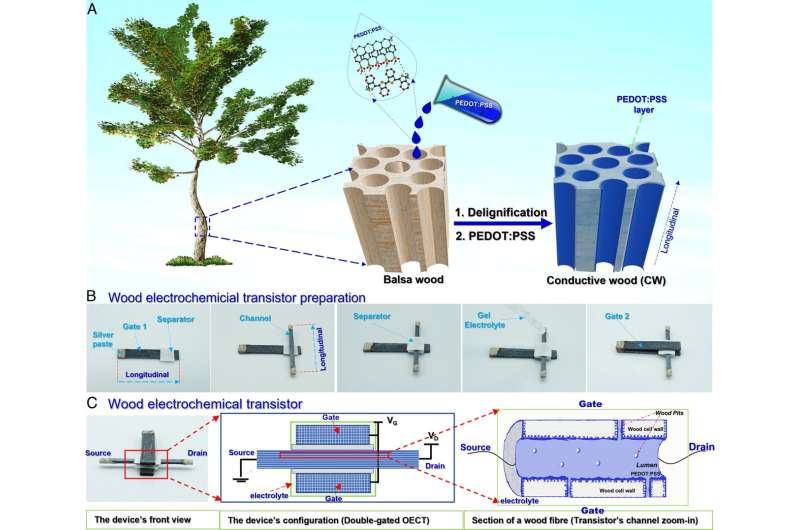Researchers at Linköping University and KTH Royal Institute of Technology have demonstrated that working transistors can be made from treated wood.

Transistors amplify electrical signals in devices and are increasingly shrinking in size. Despite being conventionally restricted to semiconducting materials such as silicon, advancements in science have led to the creation of a wooden transistor for investigating its potential use in bioelectronic and plant-based gadgets.
A team of organic chemists and engineers from Linköping University and KTH Royal Institute of Technology in Sweden have successfully showcased the possibility of constructing functional transistors utilizing treated wood.
Following a series of trials involving various tree species, the team of researchers determined that balsa wood was the most appropriate choice because of its favorable traits, such as strength, permeability, and low density. To enhance the wood’s porosity, the team initially immersed narrow wood strips in a chemical solution which facilitated the removal of lignin. In a subsequent step, the researchers introduced PEDOT:PSS, a conductive plastic, into the tiny conduits in the wood that are typically used for water transportation, effectively covering the vessel walls.
The experimental setup utilized merely three treated wood slats, with two wide slats arranged on top of one another to serve as control electrodes. The third slat was placed between the other two in a perpendicular orientation, thus serving as a channel between the power source and the current drain. In order to enable the unhindered flow of ions and electrons, the team utilized an electrolyte gel to fill the spaces within the channel. Furthermore, the strips were kept apart by a thin cloth made from cellulose, resulting in a cross-shaped transistor configuration.
The device constructed by the team was tested by applying 2.5 volts of current, which successfully interrupted the flow as intended. Although the team admits that their device operates slower than current alternatives, with approximately one second to turn off the current and five seconds to switch it back on, they believe their experiment serves as evidence that bio-transistors can be built.
Reference : Van Chinh Tran et al, Electrical current modulation in wood electrochemical transistor, Proceedings of the National Academy of Sciences (2023). DOI: 10.1073/pnas.2218380120






